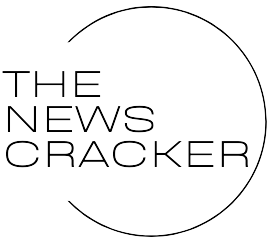What gets measured gets managed wisdom rings truer than ever amid volatile markets and remote workforces. Yet companies often lack contextual insights to inform targets. According to the people at ISG, peer benchmarking provides hard data revealing strengths, weaknesses and improvement opportunities across operations. In the following post, we’ll look at why leaders are using specialized benchmarking and AI solutions to guide critical decisions in the modern age.
Squashing Assumptions Through Proof
In the absence of benchmarks, teams frequently operate on assumptions and gut feelings, but solid metrics backed by peer insights ground strategies in proof. See the following:
- Sales managers discover conversion rates lagging 10% behind industry standards. Now underperformance risk quantifies if investing more in lead gen outweighs optimization costs.
- Executives assumed recent headcount jumps improved customer service levels, but client satisfaction scores reveal otherwise. Benchmarking confirms rebooting quality training first before hiring.
- Verified statistics counter conjecture to drive smarter planning backed by tangible market evidence.
Perspective Calibration
Have you ever felt like your company is world class at something only to discover mediocrity relative to competitors? Benchmarking delivers a reality check highlighting areas that feel impressive only because of narrow perspective.
Alternatively, some leaders underestimate capabilities when comparing to public rivals they deem out of their league. But benchmark data against similar-sized private companies reveals stronger positioning than assumed.
Either way, calibrated visibility informs strategic response. Metrics paired with market context converts humble confidence into competitive advantage.
Optimal Resourcing Through Norms
Staffing appropriately challenges every executive. Forecasting models rely on historical performance and future growth estimates, but industry benchmarks supply more predictive headcount ranges aligned to revenue figures.
Why over guess potential when peer insights already reveal optimally efficient team sizes?
Likewise, salary benchmarking ensures compensation attracts and retains top talent within market means. Don’t sabotage margins with misaligned pay failing to procure commensurate contribution. Rich data substitutes speculation for building an elite workforce at fair cost.
Maintenance Checks Flag Emerging Issues
Regular checkups compare key operational metrics year-over-year along with peer performance at each juncture. Consistent monitoring quickly exposes downward trajectories that jeopardize standards.
For example, employee satisfaction scores may lag the previous year. Further investigation uncovers growing worries around job security from recent layoffs. Benchmarking confirms scores rank far below industry averages, prompting renewed focus to stabilize culture.
Ongoing assessments also indicate strengths to double down on. Identifying world-class performance worth maintaining rewards because of its rarity.
Superpowered Decisions
Benchmarking services supply a scope of vision even the most seasoned leaders lack. The granularity reveals critical diagnostics while the market context informs actions to distill operations to their most efficient and effective potential.
Widespread adoption among elite enterprises cements benchmarking’s status as a prerequisite competitive tool.
Objectivity Drives Improvement
The mere act of tracking metrics triggers a sense of accountability even without benchmarks as teams witness rising or falling scores. Devoid of context though, data lacks instructive weight to motivate meaningful change.
Benchmarking injects urgent impetus by quantifying gaps against optimal potential. Friendly competition against anonymous peers speeds progress through proof of better outcomes achievable.
Wartime leaders scrutinize comparative advantage to deploy limited resources for maximum impact. Companies not fanatically benchmarking in volatile times demonstrate negligence.
Conclusion
Benchmarking delivers an undisputed performance compass no organization can afford to ignore. Metrics transform assumptions into facts, while peer insights set optimal target states across operations. Together, they drive smarter strategies and priority setting in real time. Top quartile is no longer a mystery box but a quantifiable destination, paved through data. In chaotic environments, numbers supply guide rails and winning vision. Simply put, without comprehensive benchmarking expect more drifting and crashing below full potential. So take control of your trajectory starting now.

